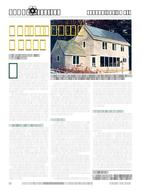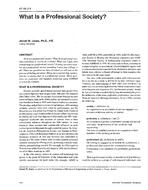In the last 20 years, indoor air quality problems have been investigated in thousands of buildings throughout North America and Western Europe. The evaluative strategies and protocols used by different researchers have generally been similar, despite differences in terminology and organisation. Most investigators recognise the need to apply a multidiscipline approach to identify and diagnose indoor air quality problems, including assessment of the physical building, occupant discomfort and ill health, and air quality and thermal conditions. Implementation of the various strategies has led to remarkably consistent conclusions. Design and operations inadequacies with heating, ventilating, and air conditioning systems are a principal cause of indoor air quality problems, having been shown as the cause in more than 50% of investigated buildings. As a consequence, indoor environmental criteria are now being integrated into the design and commissioning process in some North American building projects, and governments are developing specific air quality procedures and regulations for non-industrial workplaces.
KEYWORDS: air quality, indoor, health, offices, occupiers, heating, ventilation, air conditioning, sick buildings, designing, commissioning, USA, calculating, thermal comfort, monitoring, measuring, buildings.
Citation: Symposium, ASHRAE Trans., 1993, vol.99, part 2, paper number DE-93-1-1, 429-439, 7 figs, 2 tabs, refs.
Product Details
- Published:
- 1993
- File Size:
- 1 file , 870 KB
- Product Code(s):
- D-17573


